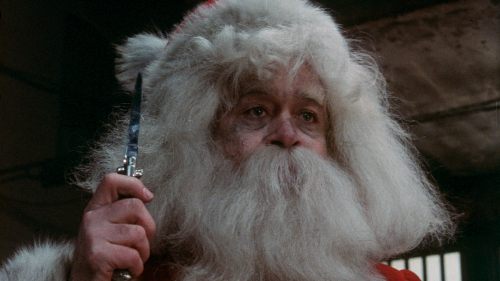Remembering THE MIRACLE ON 34TH STREET
Ah, Christmas. Families will gather round the tree, open presents, and inevitably argue over what movie to watch as a means of post-gift distraction. Most often trotted out as part of Macy’s holiday campaign and/or referred to via its 1994 remake, the original Miracle on 34th Street from 1947 remains an indelible Christmas favorite. Though it officially turned seventy back in June - 20th-Century Fox studio head Darryl Zanuck insisted more people saw movies in warmer weather - Miracle on 34th Street brings the requisite heart for the holidays alongside a timely message of cooperation and faith.
Based on a short story by Valentine Davies, Miracle on 34th Street follows Kris Kringle (played in the ‘47 version by Edmund Gwenn) as he takes a job as the in-store Santa Claus at Macy’s. Once there he attempts to convince a skeptical girl named Susan (Natalie Wood) and her mother Doris (Maureen O’Hara) that he’s real while proving his authenticity in a court of law.
Miracle on 34th Street still captures audiences seventy years later because of the intangible feelings it evokes. The story’s central thesis is to have faith in something, not God per se but the goodness of humanity or Santa himself. As Kris explains to benevolent attorney Fred Gailey (John Payne), he comes down to Earth to remind people about what makes Christmas special. It isn’t about commercialism - despite Kris’ charming penchant for advising parents where to get the cheapest toys for their children - but the happiness of people, and their willingness to come together and make their own families in the spirit of the holiday.
This feeling of togetherness and the ability to create a family free of biological ties was timely to those living in the shadow of WWII, which ended in the U.S. two years prior. With so many killed, families attempted to move on, and Miracle on 34th Street reiterates that family doesn’t have to be nuclear but can be stitched together by those you meet along the way. Mr. Gailey is a kindhearted man who lives in the same building as Susan and Doris, and who eventually becomes a father figure and love interest to the pair, respectively. A little Dutch girl visits Kris, taken there by her new adoptive mother, where she tells him she doesn’t want anything for Christmas; she’s received the new mother she wanted. These moments inspire the war-beleaguered audience to hold their loved ones close and remember new friends and family can be made every day.
The film’s desire for the makeshift family also comes across in its message of brand loyalty. In the immediate aftermath of WWII, America’s interest rate was lowered as a means of spurring the economy. Unfortunately this increased inflation and the unemployment rate, but the intent was to get people back towards putting money into American products. By that same token, the studio solicited the use of both the Macy's and Gimbels brand for the film. Macy's is where Kris resides, but the movie makes a point of having Mr. Macy and Mr. Gimbel shake hands, a faux illustration of unity as a marketing scheme. The film acknowledges how Kris is used as a gimmick for the Macy's name, but there’s never a feeling of overt commercialism within the film despite the tacit hope that audiences visit Macy's after their screening. The point is to remind 1947 audiences that even those involved in capitalism, such as stores and the government, come together for a reason, faith in something grander than themselves. They come together for faith in America. The 1994 remake loses this in an exaggerated presentation of the upright (fictional) Cole’s department store threatened by the generic big-box Shopper’s Express.
But it is this message of faith and belief, universal to all Christmas movies, that stands out when applied to Miracle on 34th Street, specifically. Kris’ attempts to convince Susan he’s real, as well as the subsequent trial, are meant to foster this spirit of belief in things unseen or perceived as childish. After millions witnessed what the U.S. could do with nuclear power, believing in Santa Claus doesn’t seem that outlandish. In fact, a simplistic return to childhood values is restorative in the wake of all the destruction that is possible.
These moments may benefit from hindsight, but it reiterates why Miracle on 34th Street remains as relevant in 2017 as it did in 1947. Social media has aided us in the creation of makeshift families, and with our political landscape so jagged it is in these communities of people that we take solace. Similarly, this uncertainty defines the film’s message of belief and simplicity. If we can find one example of Kris Kringle in the world, maybe there’s a chance. Ultimately, the movie reminds us that sometimes it’s better to believe in a guy like Santa Claus than question the realities of our world. Miracle on 34th Street blends escapism with the nuanced hope that belief is possible for everyone, and seventy years later it’s possible for us all to believe in Santa Claus.



